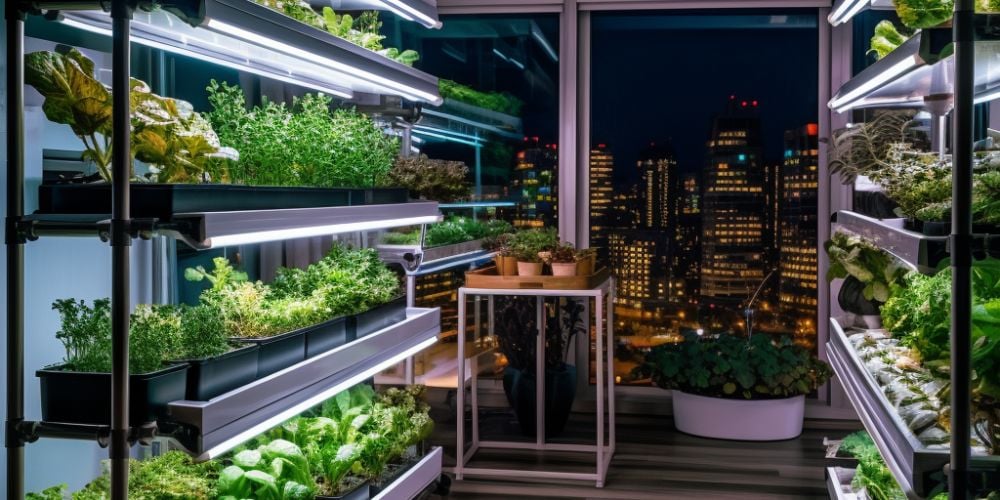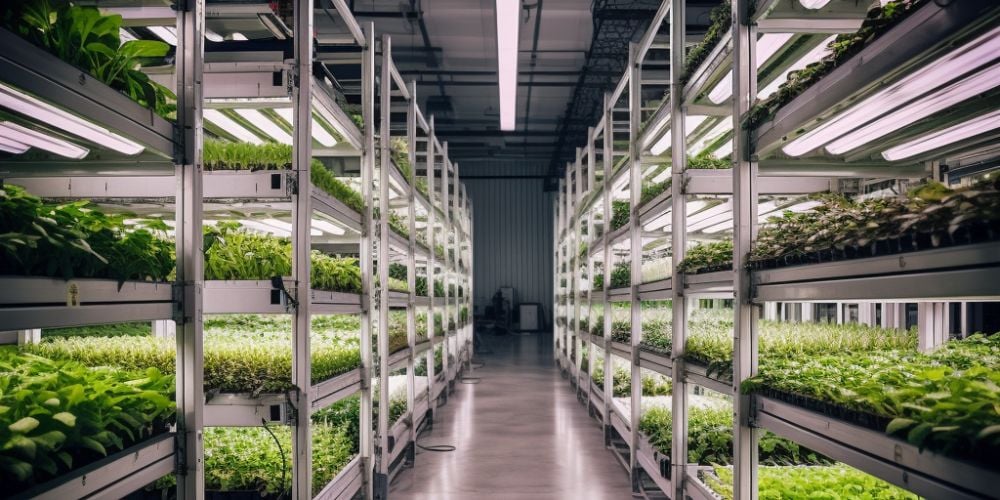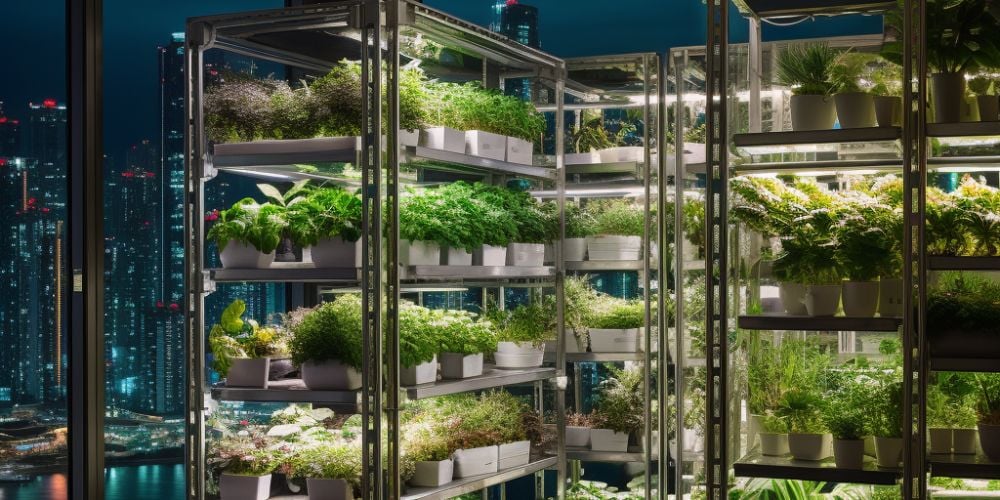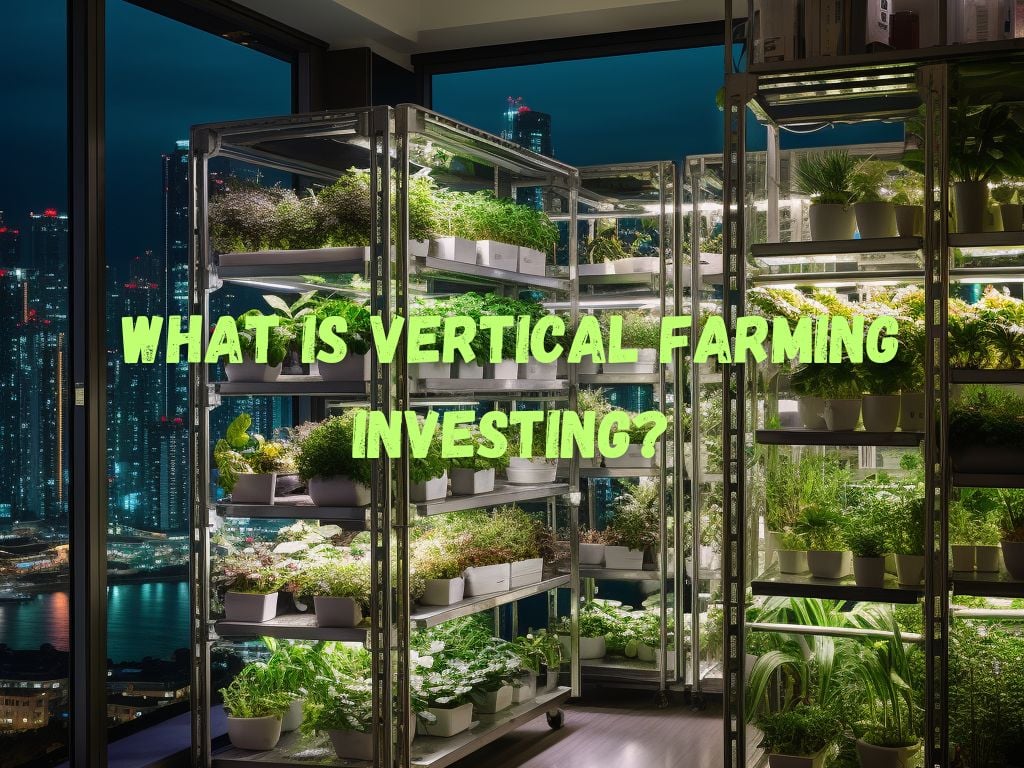Vertical farming has emerged as a revolutionary solution to meet the growing demand for sustainable agriculture while maximizing land efficiency.
By leveraging technology and innovative cultivation methods, vertical farming offers a promising investment opportunity.
In this comprehensive guide, we will delve into the concept of vertical farming investing, explore its benefits, discuss various investment options, and address commonly asked questions.
Introduction to Vertical Farming Investing
Vertical farming is a method of growing crops in vertically stacked layers or structures, such as towers, containers, or skyscrapers.
This approach utilizes artificial lighting, climate control systems, and hydroponic or aeroponic systems to cultivate crops, independent of traditional soil-based agriculture.
The objective of vertical farming investing is to optimize crop yield, reduce water consumption, and minimize the environmental impact of agriculture.
Benefits of Investing in Vertical Farming
Sustainable Agriculture and Environmental Impact
Vertical farming presents a sustainable alternative to conventional farming practices.
By employing efficient water and nutrient usage, this method can reduce water consumption by up to 95% compared to traditional farming.
Additionally, vertical farming minimizes pesticide usage and eliminates the need for synthetic fertilizers, thereby reducing chemical runoff and contamination of water bodies.

Increased Crop Yield and Land Efficiency
The utilization of vertical space allows for higher crop density, resulting in increased yields per square foot compared to traditional farming methods.
Vertical farming can produce multiple layers of crops, enabling year-round cultivation and overcoming the limitations of seasonal changes. This heightened productivity offers significant advantages for investors seeking profitable returns.
Year-Round Crop Production and Reduced Dependency on Weather
Unlike traditional farming, which heavily relies on weather conditions, vertical farming offers a controlled environment for crop production.
By controlling temperature, humidity, and lighting conditions, farmers can optimize growth and harvest cycles, reducing the risk of crop losses due to adverse weather events.
The ability to supply fresh produce consistently throughout the year enhances the market value and profitability of vertical farming investments.
Types of Vertical Farming Investments
Investing in Vertical Farming Startups
Investing in promising vertical farming startups can yield exceptional returns. Companies such as Plenty have attracted significant investment from major players like Walmart.
Identifying startups with innovative technologies, proven track records, and solid business plans can be a lucrative investment opportunity.
Investing in Public Vertical Farming Companies
Several vertical farming companies have gone public, providing investors with more accessible investment options.
One notable example is AppHarvest, which recently became the first publicly traded agriculture technology company.
Village Farms International Inc. and Hydrofarm Holdings Group Inc. are other prominent players in the vertical farming industry.
Investing in Vertical Farming Stocks and ETFs
For those looking for diversified exposure to the vertical farming industry, investing in individual stocks or Exchange-Traded Funds (ETFs) is an attractive option.
Stocks of established agricultural technology companies like AeroFarms, Illumitex, and Urban Crop Solutions offer direct exposure to vertical farming investments.
Several ETFs, such as the Global X Food & Agriculture ETF and the iShares S&P Global Agriculture Index Fund, also include vertical farming companies within their portfolios.

Factors to Consider When Investing in Vertical Farming
Before diving into vertical farming investments, it is crucial to consider various factors to make informed investment decisions.
Market Trends and Growth Projections
Studying market trends and growth projections for the vertical farming industry is essential.
The global vertical farming market is projected to reach $12.77 billion by 2026, with a compound annual growth rate of 24.8% from 2021 to 2026.
Understanding the demand potential, market competition, and regulatory factors can help investors identify lucrative opportunities.
Company Analysis and Financial Performance
Performing due diligence on companies is crucial to evaluate their financial performance, competitive advantages, and growth potential.
Factors to consider include revenue growth, cost structures, profitability, and market positioning.
Analyzing partnerships, patents, and intellectual property rights held by the companies can also provide valuable insights into their competitive edge.
Technological Advancements and Innovation
Monitoring technological advancements and innovations within the vertical farming industry is vital for spotting investment opportunities.
Cutting-edge technologies such as artificial intelligence, machine learning, and automation play a crucial role in enhancing operational efficiency, crop quality, and scalability.
Investing in companies that leverage such technologies can yield significant returns.
Risks and Challenges of Vertical Farming Investments
While vertical farming investments offer numerous benefits, it is important to be aware of the associated risks and challenges.
High Initial Investment and Operational Costs
Setting up and maintaining a vertical farm requires significant investment in infrastructure, technology, and skilled labor.
High energy costs, research and development expenses, and operational overheads can impact the profitability of vertical farming investments. Understanding these costs and their potential impact on returns is crucial.
Regulatory and Legal Considerations
Navigating regulatory and legal frameworks is essential to ensure compliance in the vertical farming industry.
Factors such as food safety regulations, zoning restrictions, and intellectual property rights can impact operations and market access. Investors must assess the legal landscape and potential obstacles before committing to investments.
Market Competition and Scalability Issues
The vertical farming market is becoming increasingly competitive, with new players entering the industry regularly.
Differentiating oneself from competitors and achieving scalability without compromising quality is a challenge. Investors should consider the market penetration strategy, scalability potential, and unique selling propositions of the companies they invest in.

Tips for Successful Vertical Farming Investments
Conduct Thorough Research and Due Diligence
In-depth research is key to successful vertical farming investments. Evaluating a company’s financial health, market positioning, and growth potential is crucial.
Understanding the competitive landscape and technological advancements within the industry is equally important.
Diversify Your Investment Portfolio
Diversification is a fundamental principle of risk management in investment.
By spreading investments across different vertical farming companies, startups, and stocks, investors can mitigate risks and maximize returns.
Consider investing in both established players and promising startups to create a balanced portfolio.
Stay Updated with Industry News and Developments
Staying informed about the latest news, market trends, and technological advancements is crucial for vertical farming investors.
Subscribing to industry publications, attending conferences, and following experts in the field can provide valuable insights and help investors make well-informed decisions.
Frequently Asked Questions (FAQs)
How does vertical farming work?
Vertical farming utilizes controlled environments, artificial lighting, and hydroponic or aeroponic systems to cultivate crops in vertically stacked layers or structures.
By leveraging technologies, vertical farming optimizes crop growth and reduces the reliance on traditional agriculture practices.
How is vertical farming profitable?
Vertical farming is profitable due to the increased crop yield, reduced resource consumption, and year-round production capabilities.
Additionally, the growing demand for sustainable agriculture and the potential for cost savings in the long run make vertical farming an attractive investment.
Are there any publicly traded vertical farming companies?
Yes, there are several publicly traded vertical farming companies. One notable example is AppHarvest, which became the first publicly traded agriculture technology company.
Village Farms International Inc. and Hydrofarm Holdings Group Inc. are also prominent players in the vertical farming industry.
What are the pros and cons of vertical farming?
The pros of vertical farming include sustainable agriculture practices, higher crop yields, decreased water consumption, and reduced dependency on weather.
The cons include high initial investment costs, regulatory challenges, and market competition.

Conclusion
Vertical farming investing presents a compelling opportunity for investors seeking sustainable and profitable ventures.
With the potential for higher crop yields, reduced resource consumption, and the ability to overcome weather dependencies, vertical farming is gaining traction in the agricultural industry.
By carefully considering market dynamics, conducting thorough research, and staying informed, investors can make wise investment decisions and contribute to a sustainable future.
Remember, vertical farming investments carry both risks and rewards. It is advisable to consult with financial advisors before making investment decisions.
Invest in the future of agriculture with vertical farming investing, and reap the benefits of sustainable growth and profitability.


 Tags:
Tags:










